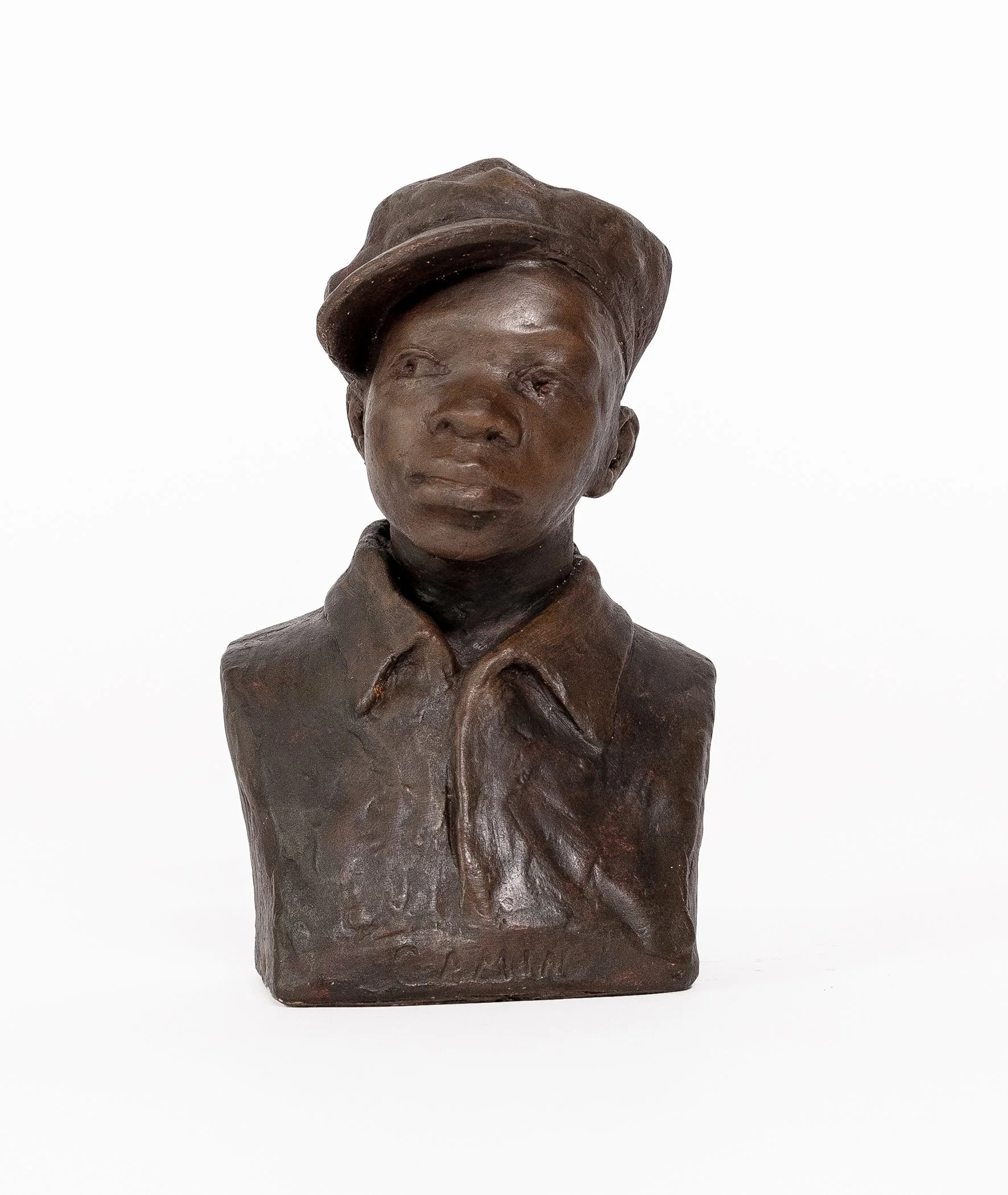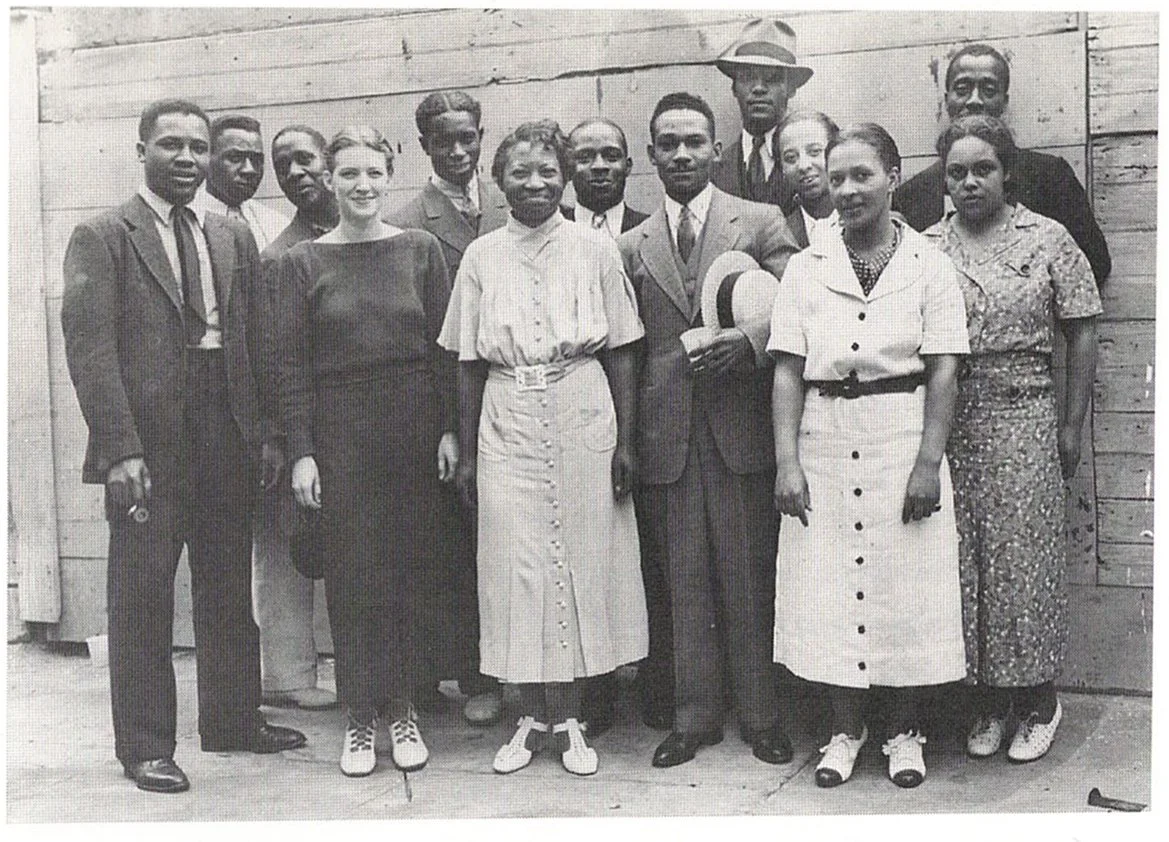
Augusta
Savage
(1892-1962)
Gamin
1929
plaster with bronze painted patina
9 inches (h)
signed and titled
Augusta Savage was born in Green Cove Springs, Florida. She had a knack for sculpting even as a small child, making mud ducks and selling them at the local fair. She married at the age of 15, but her husband died the following year, after they had a child together. In 1915, her family moved to West Palm Beach, where she met a potter and acquired 25 pounds of clay. Her sculpture received much local attention, and through a series of events and support of teachers, Savage traveled to New York City in her quest to become a professional sculptor.
Savage was admitted to the Cooper Union School, which was tuition-free, and finished her four-year program in three years. Among her earliest and most celebrated works was Gamin (1929), a small bust of an African American boy in a cap. Modeled with a sensitive naturalism that captured both character and spirit, the sculpture drew critical acclaim and helped secure Savage a Julius Rosenwald Fellowship. The recognition of Gamin marked a turning point in her career, propelling her into the national spotlight.
With the fellowship, she traveled abroad to France, where she joined a group of Black artists and intellectuals, including Hale Woodruff, Henry Ossawa Tanner, and Countee Cullen. She studied with Félix Benneteau at the Académie de la Grande Chaumière and had two works accepted for the Salon d’Automne. Savage also exhibited at the Grand Palais in Paris.
By the early 1930s, Savage was living in Harlem and had created a school, the Savage Studio of Arts and Crafts. In 1933, she founded The Vanguard, a group of Harlem intellectuals who met in her studio to discuss politics, art, and the condition of African Americans. In 1938, she was commissioned to create a sculpture for the 1939 New York World’s Fair. Inspired by the hymn written by Rosamond and James Weldon Johnson, she produced the 16-foot painted plaster Lift Every Voice and Sing (also known as The Harp), installed near the Contemporary Art Museum. Funds to have the work cast in bronze never materialized, and the sculpture was bulldozed at the close of the fair. Only the small maquettes remain.
Despite many professional losses, Savage held a one-woman show at the Argent Galleries in New York in 1939. She later moved to Saugerties, New York, where she lived in relative obscurity, but continued to teach and mentor artists as well as write fiction. Augusta Savage passed away after a long battle with cancer in 1962.
Selected Exhibitions
Jubilee: Afro-American Artists on Afro-America, Boston Museum of Fine Arts, 1975
Bearing Witness: Contemporary Works by African-American Women Artists, Spelman College Museum, Atlanta, GA, 1996
Narratives of African American Art and Identity: The David C. Driskell Collection, University of Maryland Art Gallery. College Park, 1998
To Conserve a Legacy: American Art from Historically Black Colleges and Universities, Addison Gallery of American Art, Phillips Exeter Academy, Andover, MA, 1999
Syncopated Rhythms: 20th-Century African American Art from the George and Joyce Wein Collection, Boston University Art Gallery, MA, 2006
Buried Treasures: Art in African American Museums, DuSable Museum of African-American History, Chicago, IL, 2012
Augusta Savage: Renaissance Woman, Dixon Gallery and Gardens, Memphis, TN, 2019 (traveling)
The Harlem Renaissance and Transatlantic Modernism, Metropolitan Museum of Art, New York, 2024

Andrew Herman (1930s-1940s), Federal Arts Project, Works Progress Administration, Instructors from the Harlem Community Art Center; Front Row: Zell Ingram, Pemberton West, Augusta Savage, Robert Pious, Sara West, Gwendolyn Bennett. Back Row: Elton Fax, Rex Gorleigh, Fred Perry, William Artis, Francisco Lord, Louise Jefferson, and Norman Lewis. (Schomburg Center for Research in Black Culture, The New York Public Library, Photographs and Prints Division, Astor, Lenox, and Tilden Foundations, 4060465.